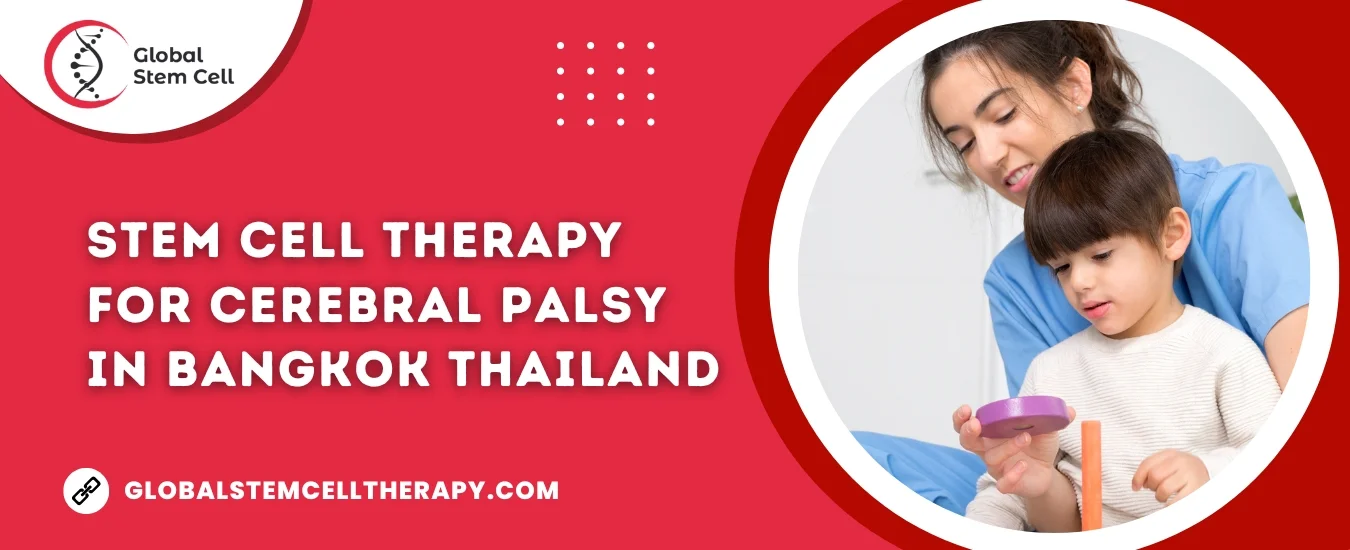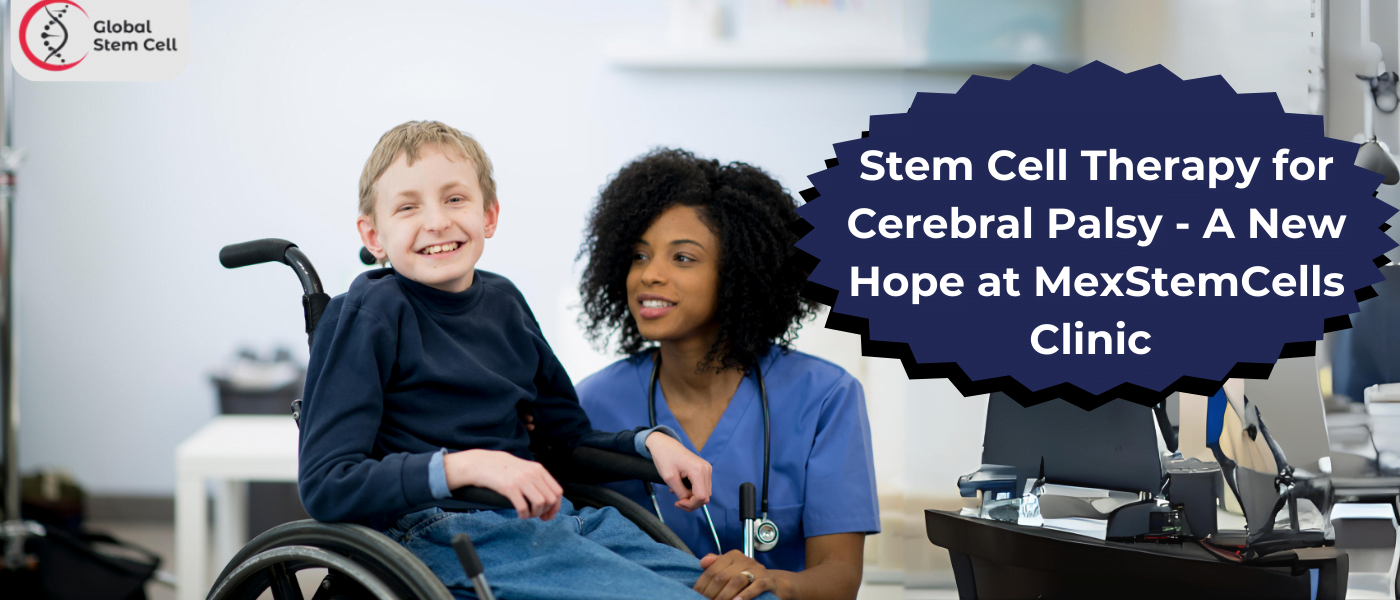
Stem Cell Therapy for Cerebral Palsy – A Ray of Hope in Bangkok Thailand
Table of Content
Cerebral Palsy (CP) is a neurodevelopmental disorder that poses significant challenges for both affected individuals and their families. Characterized by impaired movement, muscle coordination, and posture, CP is caused by abnormalities or damage to the developing brain, often occurring before or during birth.
This complex condition can manifest in various forms, from mild motor impairments to severe physical disabilities and intellectual limitations. Traditional treatments have focused on symptom management, physical therapy, and assistive devices to enhance the quality of life for those with CP. However, recent breakthroughs in medical science have unveiled a new ray of hope in the form of stem cell therapy.
Cerebral Palsy and its Challenges
Cerebral Palsy (CP) is a complex neurological disorder that affects movement, muscle tone, and motor skills. It is caused by damage to the developing brain, typically occurring during fetal development, childbirth, or early infancy. This damage can be a result of various factors, including genetic mutations, infections during pregnancy, or brain injury during childbirth.
The challenges posed by cerebral palsy are diverse and can vary significantly from one individual to another. The severity of CP ranges from mild to severe, and the specific areas of the body affected can differ. Some common challenges faced by individuals with cerebral palsy include:
- Impaired Motor Function: Motor difficulties are a hallmark of cerebral palsy. Depending on the extent of brain damage, individuals may experience muscle weakness, involuntary movements, spasticity (stiffness), or difficulties with coordination. These impairments can affect both gross motor skills, such as walking and standing, and fine motor skills, such as writing or manipulating objects.
- Speech and Communication Difficulties: Cerebral palsy can impact the muscles used for speech and communication, leading to speech impediments or difficulties in expressing thoughts and emotions. Augmentative and alternative communication (AAC) devices may be used to assist those with severe speech challenges.
- Intellectual and Developmental Disabilities: In some cases, cerebral palsy can be associated with intellectual disabilities, affecting cognitive function, learning, and problem-solving abilities. However, it is important to note that intelligence levels can vary widely among individuals with CP, and many have average or above-average intellectual abilities.
- Challenges with Activities of Daily Living (ADLs): Performing routine tasks, such as dressing, eating, or personal hygiene, can be challenging for individuals with cerebral palsy, particularly if their motor skills are significantly impaired. Occupational therapy can help develop skills to overcome these challenges and promote independence.
- Emotional and Social Difficulties: Living with cerebral palsy can impact an individual’s emotional well-being and social interactions. Feelings of frustration, isolation, and low self-esteem may arise due to mobility limitations or perceived differences from peers. Supportive environments and social interactions are essential for emotional growth and development.
How stem cell therapy helps in Cerebral Palsy treatment?
Stem cell therapy offers a revolutionary approach to treating cerebral palsy by harnessing the regenerative capabilities of stem cells to address the underlying neurological damage and promote repair and regeneration of damaged brain tissues. Here’s how stem cell therapy helps in cerebral palsy treatment:
- Neuroregeneration: Stem cells have the unique ability to differentiate into different cell types, including neurons. When introduced into the damaged areas of the brain in individuals with cerebral palsy, stem cells can potentially replace or repair damaged neurons, leading to neuroregeneration. This process may improve neural connections and communication within the brain, enhancing motor function and cognitive abilities.
- Anti-Inflammatory and Immunomodulatory Effects: Brain damage in cerebral palsy can trigger an inflammatory response, which further contributes to tissue damage. Stem cells have anti-inflammatory and immunomodulatory properties, helping to regulate the immune response and reduce inflammation. By mitigating inflammation, stem cells can create a more favorable environment for healing and tissue repair.
- Neuroprotective Effects: Stem cells release neurotrophic factors, which are molecules that support the growth, survival, and function of neurons. These factors have neuroprotective effects, safeguarding existing neurons from further damage and promoting their resilience.
- Improving Blood Flow: Stem cells can also stimulate the formation of new blood vessels (angiogenesis) and enhance blood flow to damaged brain regions. Improved blood supply means more oxygen and nutrients are delivered to the affected areas, supporting tissue repair and function.
- Inducing Neuroplasticity: Neuroplasticity refers to the brain’s ability to reorganize and form new neural connections. Stem cell therapy may induce neuroplasticity in individuals with cerebral palsy, allowing the brain to adapt and compensate for damaged areas, leading to improvements in motor skills and cognitive functions.
Cost of Stem Cell Therapy for Cerebral Palsy in Bangkok Thailand
The cost of stem cell therapy can vary significantly depending on various factors such as the type of stem cells used, the number of treatments required, the severity of the condition, the medical facility, the expertise of the medical team, and the country or region where the treatment is conducted.
On average, the cost of stem cell therapy for cerebral palsy may range from $15,000 to $30,000 per treatment session. It’s important to note that most patients may require multiple treatment sessions to achieve the desired results, which can further impact the overall cost.
Why choose Bangkok Thailand for Stem Cell Treatment?
Choosing Bangkok, Thailand, for stem cell treatment offers several compelling reasons that make it a popular destination for medical tourists seeking innovative therapies. Here are some of the key factors that make Bangkok an attractive choice for stem cell treatment:
- World-Class Medical Facilities: Bangkok is home to state-of-the-art medical facilities equipped with advanced technology and modern infrastructure. Many hospitals and clinics in Bangkok have earned international accreditation and certifications, ensuring high standards of healthcare and patient safety.
- Expert Medical Professionals: The city boasts a pool of highly skilled and experienced medical professionals, including doctors, surgeons, and specialists, who are well-versed in the latest advancements in stem cell therapy and other medical treatments.
- Advanced Stem Cell Research: Bangkok has been at the forefront of stem cell research and clinical trials, contributing to the development of cutting-edge therapies. This research-driven environment ensures that patients have access to the latest and most promising stem cell treatments.
- Affordable Treatment Options: Compared to Western countries, stem cell therapy and other medical treatments in Bangkok tend to be more affordable. The cost-effectiveness of treatments, without compromising on quality, attracts patients from around the world.
- Personalized Treatment Plans: Medical institutions in Bangkok prioritize personalized care for each patient. Treatment plans are tailored to the individual’s specific condition and needs, ensuring the best possible outcomes.
Patient Testimonial about Stem Cell Therapy for Cerebral Palsy in Bangkok Thailand
Are you or your loved one seeking innovative and transformative stem cell treatment for cerebral palsy? Look no further! Contact us today to explore the possibilities of stem cell therapy in Bangkok, Thailand, and embark on a journey of hope and healing.






